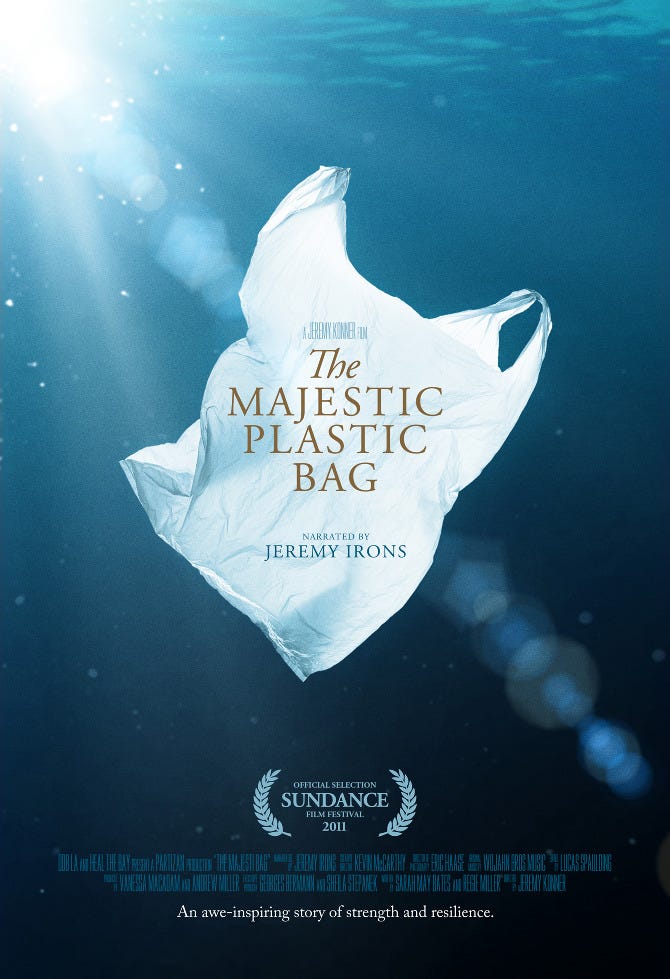It’s a serious thing - being funny.
Humour is tricky for teenagers. Many of my students want to make comedic films, but they often look in the wrong places for inspiration. Inevitably, someone says they want to make something like The Office, which, of course, is already a parody. A parody that only works because it references a very specific cultural format - one my students have rarely, if ever, actually experienced.
What they want is to copy the parody, which makes it a pastiche. And those just aren’t funny.
I like funny. But teaching it is hard, especially because humour only works when there’s some truth at the heart of it. And that’s a fine line to balance.

Enter the Mockumentary
Mockumentaries are clever vehicles for satire. They take something familiar and serious, and apply it to something unexpected or absurd. The humour lives in the contrast, in tone, structure, and delivery.
Take The Majestic Plastic Bag (2010), made for the environmental group Heal the Bay, narrated with rich seriousness by Jeremy Irons. It follows a plastic bag on its “migration” through urban landscapes to the ocean, framed like a nature documentary in the style of David Attenborough.
It’s clever, and in its way, a very accurate portrayal of the life of a plastic bag. So while it’s technically a mockumentary, it’s also a documentary. Just… not.
This format works because the humour comes from structure, not performance. The technical choices, such as voice-over, pacing, and camera work, are what carry the weight. That makes it an accessible entry point for students. They can explore humour, while offering critique, and create something audiences will actually pay attention to.
The trick is to take something familiar, like an Attenborough-style nature doc, and subvert it. Instead of the mysterious duck-billed platypus, focus on a plastic bag. Then add a trusted narrator, Jeremy Irons, whose cadence echoes Attenborough’s enough to be amusing, while bringing his own environmental advocacy into the mix.
Finding the funny means finding the topic
I ask my students to tell stories that are important to them. All film, regardless of scope or scale, resonates when it’s based on something true. Instead of asking, “What do you think is funny?”, I ask, “What is important to you right now?” or “What’s something real, or not, that you’re obsessed with?”
Pick something they have opinions about. This can be anything from the misconceptions of teenagers in society to the real pressures of school. It can be big or small, personal or shared, as long as they care about it.
Once they have identified something they care about, I ask them to map out how that topic is usually presented. Is it a PSA? A news report? A dry school science video?
Identifying the structure is key. The form becomes the foundation.
Keep the format. Drop the topic into it, completely out of context, and let the form do the work.
Satire 101
Satire exaggerates or reframes problems, contradictions, or absurdities to highlight them. A mockumentary is a perfect vehicle for satire, it mimics serious media to expose the ridiculousness of its subject.
A quick reminder: satire needs a target. It’s not just about being silly. It is about challenging something; it is, essentially, about raising awareness and dialogue in a way that confronts but also invites people in.
Mockumentaries are brilliant at this because they imitate the rhythms and rituals of formats we trust. They are not random. They are precise. They use humour with intention.
What I want students to understandis that comedy does not come from adding jokes, it comes from stripping things back and playing them straight. The joke is in the mismatch between form and content.

Bringing this into the classroom
Students can approach a mockumentary in a few ways. I like to offer two:
Start with something serious - Choose a meaningful, frustrating, or real-world issue, like voting age, teen stereotypes, or school surveillance.
Go absurd - Pick a ridiculous subject (e.g. vampires) and pair it with a serious format (e.g. a science documentary on bats). The contrast is the comedy.
How to build it
Step 1: Identify the topic (truth or fiction)
Start with something your students care about, something they’re frustrated by, fascinated with, or completely obsessed with. It could be a real-world issue (e.g. school stress, social media rules, climate anxiety) or something completely made up (e.g. unicorn sightings, conspiracy theories). What matters is that they have something to say about it.
Step 2: Choose the format
What’s the familiar delivery system for that kind of information? A BBC-style nature doc? A school science video? A PSA? A breaking news report? Pick something the target audience would immediately recognise, the more conventional, the better. That format becomes the anchor for everything else.
Step 3: Map the tropes to find the structure
What makes that format feel “real”? List out its signature features:
Tone of voice (detached, serious, dramatic, clinical)
Narration style (voice-over? on-the-ground interviews?)
Music and pacing (gentle strings? tension-building drones?)
Visual choices (slow pans, archival footage, close-ups, text overlays)
The more detailed the conventions, the stronger the parody will be.
Step 4: Drop the topic into that structure
Now take your topic and fully embed it in the format mapped out. Remember, the format is paramount to this all working. That is where the humour lands, not in trying to be funny but in presenting the absurd with total sincerity.
And that, folks, is how you end up with The Majestic Plastic Bag and The North American House Hippo - making people think twice.



